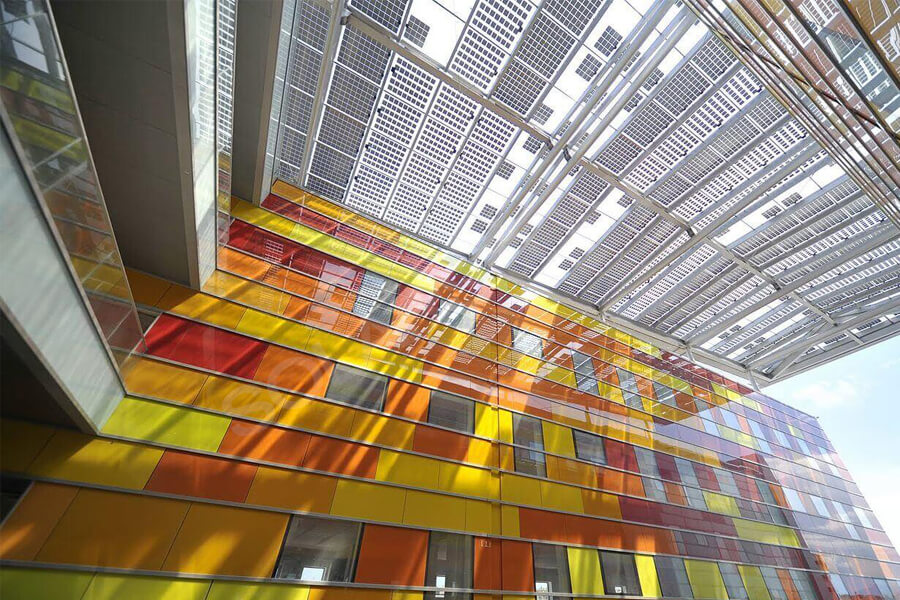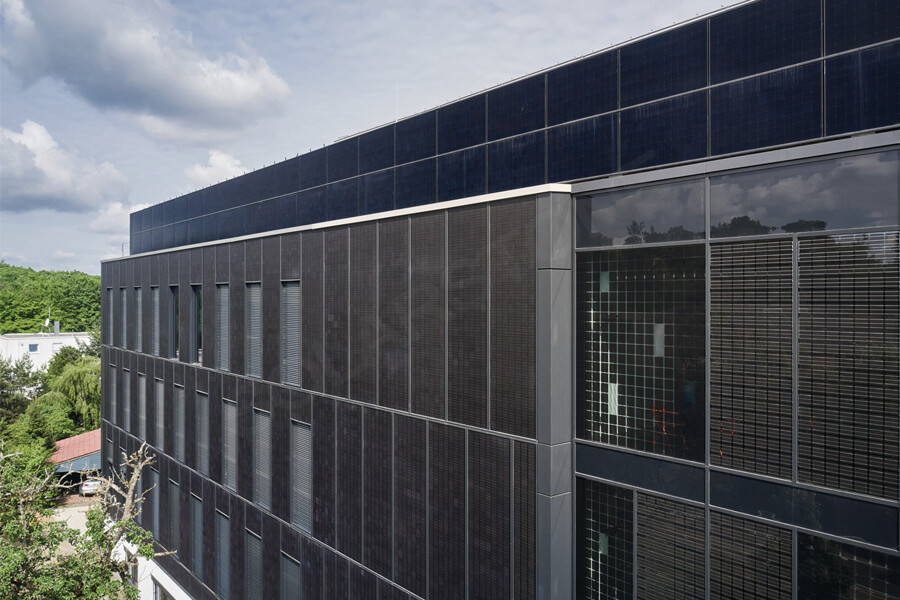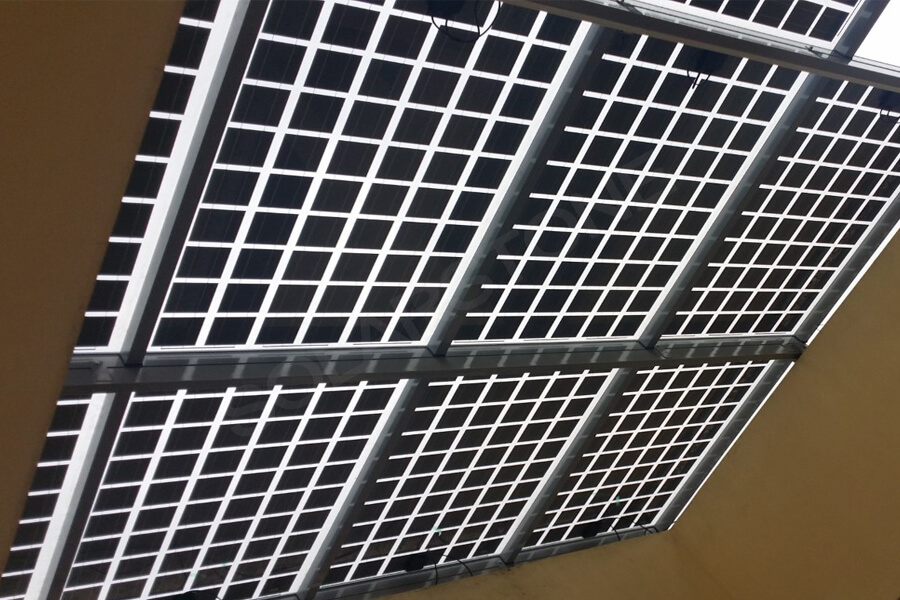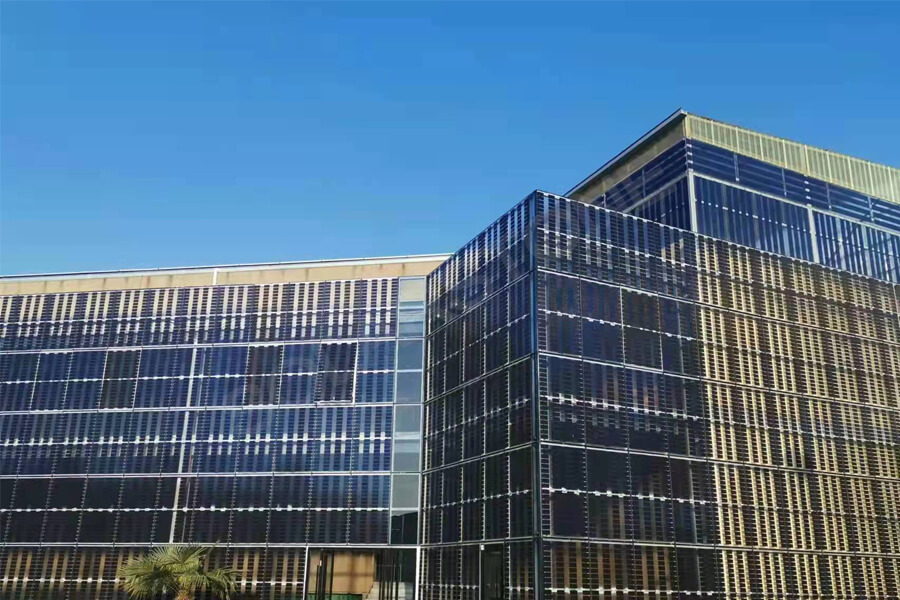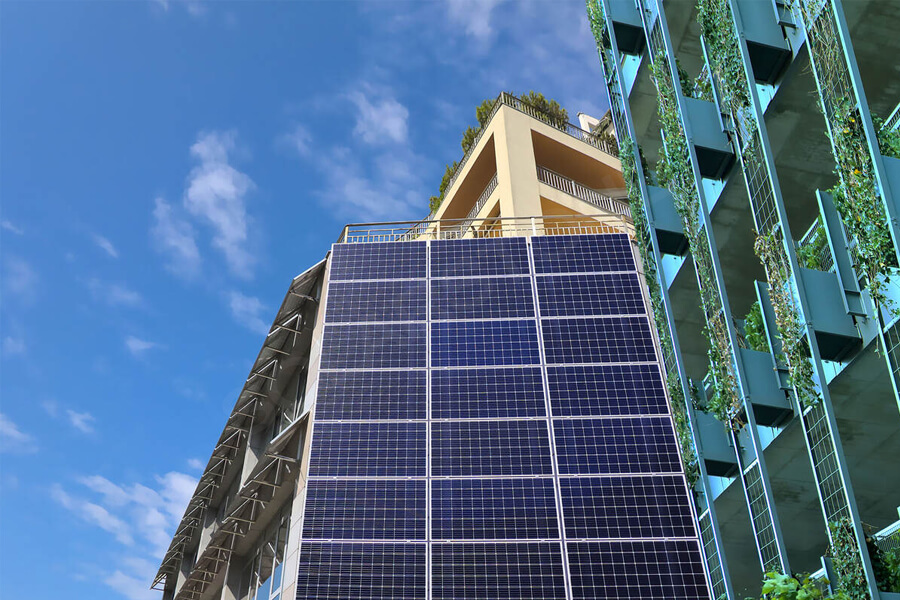BIPV solar panels and zero energy buildings: how to achieve energy independence
In today’s world, climate change is an urgent issue, and energy-efficient buildings have become inevitable. Two important concepts that are becoming increasingly popular in this regard are BIPV solar panels and zero energy buildings.
Building integrated photovoltaic solar panels are a renewable energy technology that is integrated into building structures to generate electricity. On the other hand, the design of net zero energy buildings aims to produce and consume the same amount of energy, thereby achieving a zero energy balance.
In this blog, we will explore the significance of BIPV solar panels and zero energy buildings, and discuss the importance of achieving building energy independence.
Why should you choose BIPV solar panels?
Choosing Building Integrated Photovoltaic (BIPV) solar panels will bring many benefits. The BIPV system generates clean and renewable energy, promotes energy independence, and reduces carbon emissions.
They effectively utilize available space and provide aesthetic appeal by seamlessly integrating into building materials. Although the initial cost may be higher, BIPV panels can provide long-term cost savings and positive return on investment.
They are durable, require minimal maintenance, and provide design flexibility to enhance building integration. BIPV panels contribute to a greener future and improved building performance by reducing reliance on fossil fuels.
Why are net zero energy buildings important?
Zero energy buildings are crucial for our pursuit of sustainable development. These buildings generate as much energy as they consume, with minimal impact on the environment.
They effectively address climate change by reducing greenhouse gas emissions and promoting energy independence. In the long run, net zero energy buildings can also save costs by minimizing energy consumption and provide resilience in times of energy price fluctuations.
The Importance of Achieving Energy Independence in Buildings
Due to the rise in energy costs and the impact of fossil fuels on the environment, the energy independence of buildings has become increasingly important. By implementing BIPV solar panels and net zero energy building designs, buildings can generate their own electricity and reduce their dependence on traditional energy sources.
This can significantly save energy, reduce carbon emissions, and improve energy independence. Realizing energy independence in buildings is crucial for reducing our dependence on fossil fuels and creating a sustainable future.
Design zero energy buildings using BIPV solar panels
In recent years, the use of Building Integrated Photovoltaic (BIPV) solar panels has gained significant popularity in the construction industry, especially in the design of energy buildings. A net zero energy building is a type of building that generates as much energy as it consumes each year, resulting in zero net energy consumption.
By utilizing solar power generation, incorporating BIPV solar panels into building design can help achieve this goal. BIPV solar panels are integrated into building envelope structures, serving as both energy and building materials, reducing the need for additional cladding and roofing materials.
To maximize the energy efficiency of net zero energy buildings, various strategies can be adopted. Firstly, the design of building envelope must minimize energy loss through insulation, sealing, and high-performance glass. The orientation of buildings also plays a crucial role in maximizing solar energy acquisition and reducing energy demand.
BIPV solar panels must be optimally oriented and shaded to ensure maximum energy generation. Generally speaking, the optimal orientation for BIPV solar panels is south facing in the northern hemisphere and north facing in the southern hemisphere. In addition, the angle of the panels should be adjusted to match the latitude of the building site, in order to obtain the maximum amount of sunlight throughout the year.
Sunshade analysis is also crucial in designing zero energy buildings using BIPV solar panels. The obstruction of nearby buildings, trees, and other obstacles can significantly reduce the power generation of solar panels. Therefore, it is necessary to evaluate potential shading effects during the design phase and adopt shading devices such as eaves, blinds, or screens to mitigate these effects.
How BIPV solar panels contribute to net zero energy buildings?
These solar panels are designed to be directly integrated into building materials such as roofs or walls, rather than installed on top of them.
Net zero energy buildings refer to those buildings that generate as much energy as they consume, thus achieving energy balance. This is achieved through a series of energy-saving measures, such as high-level insulation and energy-efficient lighting and appliances, as well as renewable energy generation, such as BIPV solar panels.
The technical aspect of BIPV plays a crucial role in achieving net zero energy buildings by seamlessly integrating renewable energy generation into building envelope structures. BIPV panels integrate solar cells directly into building materials such as glass, roofs, or exterior walls, effectively capturing sunlight and converting it into electrical energy.
These panels provide design flexibility, allowing architects to customize their appearance and seamlessly integrate into various architectural styles. With efficient solar cells, BIPV panels maximize energy conversion and power generation.
They are connected to the building’s power system and can effectively distribute and utilize the generated electricity. The BIPV system can be integrated into building energy management systems to achieve real-time monitoring and optimization of energy usage.
Compared to traditional solar panels, BIPV solar panels have several advantages. One major advantage is their aesthetic appeal. BIPV solar panels can be designed to seamlessly integrate into building designs, making them less conspicuous than traditional solar panels.
Another advantage is their dual functionality. By acting as building materials and renewable energy generators, BIPV solar panels can reduce the total cost of construction and power generation.
By reducing the heat absorbed by the roof or walls of a building, BIPV solar panels can also improve the energy efficiency of the building by lowering the cooling load required to maintain a comfortable temperature inside.
BIPV solar panels are a promising technology that can contribute to zero energy buildings. As the world continues to move towards the future of zero energy buildings, BIPV solar panels may play an increasingly important role.
Utilizing BIPV solar panels and energy storage to achieve energy independence
Realizing energy independence has become an important goal for individuals, businesses, and governments. One way to achieve energy independence is through the use of BIPV solar panels combined with energy storage technology.
There are various forms of energy storage technology, including batteries, flywheels, pumped storage, and thermal storage. Due to its reliability and scalability, batteries are currently the most commonly used form of energy storage. Especially lithium-ion batteries are becoming increasingly important in commercial applications.


